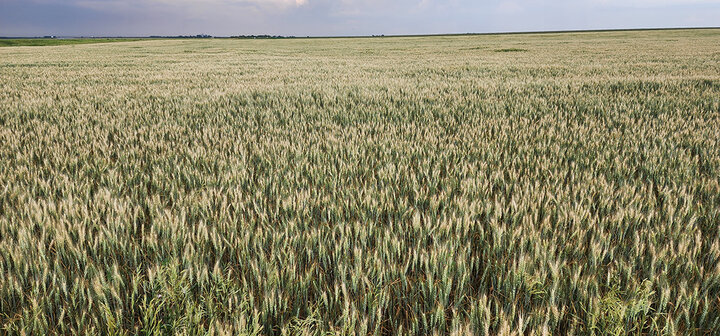Wheat disease surveys during the week of June 12 were combined with wheat field days in Cheyenne County (Figure 1) and Deuel, Perkins, Red Willow, Box Butte and Banner counties. During these surveys and others conducted during the 2023 growing season, several diseases were observed.
The major factors that impacted disease development in the 2023 wheat crop in Nebraska were drought-like conditions in the east and wetter conditions in the west. Due to the dry weather in the east, diseases did not develop to damaging levels. Stripe rust (Figure 2) and leaf rust (Figure 3) arrived late in the growing season and therefore, these two diseases did not significantly impact yield, even in the western part of the state where conditions were favorable to disease development.


Tan spot (Figure 4) was the predominant disease in wheat fields in the west, especially in the Panhandle. Favored by moisture from frequent rainfall, tan spot developed to severe levels in fields that had wheat residue on the soil surface. The causal fungus survives and overwinters on wheat residue.
Fusarium head blight (FHB, Figure 5) developed to moderate levels in the west, including in the Panhandle where, in a normal growing season, it is rarely seen due to insufficient moisture. During this year’s growing season, however, frequent rainfall in the west created conditions favorable to development of FHB.
Cephalosporium stripe (Figure 6) is a residue-borne fungal disease that is not commonly seen in Nebraska wheat fields. One, two or three conspicuous, chlorotic and longitudinal stripes appear on the leaves during jointing and heading. The disease is favored by wet, low pH (acidic) soils and winter temperatures that fluctuate around freezing. Moderate levels of Cephalosporium stripe were observed in wheat research plots and fields at the West Central Research, Extension and Education Center near North Platte in Lincoln County.



Bacterial leaf streak (Figure 7), also known as black chaff when it occurs on wheat heads, was observed at low levels in the west where moisture favored its development.
Two virus diseases were observed. Barley yellow dwarf (Figure 8) occurred in some fields at trace to low levels. Wheat streak mosaic (Figure 9) was observed at trace levels in some fields; however, severe levels were seen in an entire field in Kimball County (Figure 10).



Bleaching of wheat heads in an entire field (Figure 11) in Franklin County was observed on June 16. A close look at the bleached heads (Figure 12) showed that the bleaching was not due to Fusarium head blight. Due to the widespread and uniform symptom of bleached heads in this field, the causal agent is suspected to be abiotic (not caused by a plant pathogen).



Management
Management of the diseases mentioned in this update is summarized in Extension Circulars EC1873 (Wheat Disease Profiles I) and EC1875 (Wheat Disease Profiles II).

